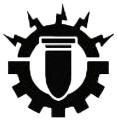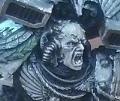| Author |
Message |
 |
|
|
 |
|
Advert
|
Forum adverts like this one are shown to any user who is not logged in. Join us by filling out a tiny 3 field form and you will get your own, free, dakka user account which gives a good range of benefits to you:
- No adverts like this in the forums anymore.
- Times and dates in your local timezone.
- Full tracking of what you have read so you can skip to your first unread post, easily see what has changed since you last logged in, and easily see what is new at a glance.
- Email notifications for threads you want to watch closely.
- Being a part of the oldest wargaming community on the net.
If you are already a member then feel free to login now. |
|
 |
![[Post New]](/s/i/i.gif) 2017/09/18 20:06:21
Subject: Scratchbuilding tools
|
 |

Sneaky Kommando
|
Hey all. I’ve been experimenting with some new tools lately and thought back to when I first started the hobby. It can be a little intimidating to get into scratch building as there are so many tips and tricks to pick up along the way. That said, I thought I would put together a list of some of my go to tools that people may not know about. Hope this helps!
So here’s my list and some links to amazon. I would be super interested to hear of any other tools that are out there if you all have any recommendations!
Cutting Tools
Circle cutter
http://a.co/ao0irkk
Miter Box
http://a.co/3X2gHTG
Rod / Tube Cutter
http://a.co/3f9LUYK
Leather Hole Punch
http://a.co/dJlw6RW
Hole Punch
http://a.co/b7z52j5
Silhouette Cutter
http://a.co/4yCWzM6
Measuring Tools
Digital Caliper
http://a.co/ad2Sbpq
Contour Gauge
http://a.co/2RMPydr
Glue (pretty sure these are toxic)
Testors
http://a.co/gozUErE
E-6000
http://a.co/geIOajc
Sculpting Tools
sanding sticks
http://a.co/hlqA7Hq
Rubber Sculpting tools
http://a.co/jcBKi5t
Metal Sculpting tools
http://a.co/807eBdZ
Heat Gun
http://a.co/17UywkR
|
|
This message was edited 1 time. Last update was at 2017/09/19 13:37:57
|
|
|
 |
 |
![[Post New]](/s/i/i.gif) 2017/09/18 20:31:26
Subject: Scratchbuilding tools
|
 |

Legendary Master of the Chapter
|
Seems you covered the majority of it.
Personally for glue, i like to also have normal super glue and baking soda on hand, as well my go to plastic glue is sci grip #3
also for rivets dont forget various flavors of woman's nail beads.
also 123 blocks are fantastic for many things.
|
 Unit1126PLL wrote: Unit1126PLL wrote: Scott-S6 wrote: Scott-S6 wrote:And yet another thread is hijacked for Unit to ask for the same advice, receive the same answers and make the same excuses.
Oh my god I'm becoming martel.
Send help!
|
|
|
 |
 |
![[Post New]](/s/i/i.gif) 2017/09/18 22:03:10
Subject: Scratchbuilding tools
|
 |

Potent Possessed Daemonvessel
Why Aye Ya Canny Dakkanaughts!
|
Only thing I've used for scrap building, not mentioned, was a hammer and chisel and a drill: I used it to split a piece of wood I was using as a central support for a dynamic base and then I drilled a hole into the top of the piece of wood to fix the model to.
(I don't really go for the expensive building/sculpting tools, eveything I use for my hobby comes from a big 'tools bench' I have at the back of my shed, which is really just a big board with tools hanging from it, a bench and two boxes of tools underneath)
|
Ghorros wrote:The moral of the story: Don't park your Imperial Knight in a field of Gretchin carrying power tools.
 Marmatag wrote: Marmatag wrote:All the while, my opponent is furious, throwing his codex on the floor, trying to slash his wrists with safety scissors.
|
|
|
 |
 |
![[Post New]](/s/i/i.gif) 2017/09/18 22:03:31
Subject: Scratchbuilding tools
|
 |

Mysterious Techpriest
|
I'd say those are the more advanced tools. but you are missing some of the basics
nice fine permanent pens, I buy sets of Staedtler lumocolor
a good steel ruler with 0.5mm markings
I picked up a steel protractor with a small ruler part a while which keeps coming in useful.
Tweezers, good fine modelling tweezers
Blue tack [other brands and colours are available]
2 pairs of pliers, useful for bending metal rods.
Some tips for the tube cutter, only buy solid metal ones, and if you are cutting tube try putting a length of tube that is the next size down inside, it gives more resistance so you can cut the tube you want rather than just squeezing it.
pretty good list tho.
|
|
|
|
 |
 |
![[Post New]](/s/i/i.gif) 2017/09/19 00:57:00
Subject: Re:Scratchbuilding tools
|
 |

Imperial Agent Provocateur
|
Jeweler's saw: Allows for much finer cuts and control than common hobby saws; with a decent blade you can cut out curves and angles. Especially useful on metal models.
Transparent ruler: While you'll want a metal ruler to guide your knife, the transparent grid on these is great for lining up your marks in the planning stage.
https://www.amazon.com/Westcott-12-Inch-Beveled-Transparent-B-70/dp/B001THRMGS/ref=sr_1_3?s=office-products&ie=UTF8&qid=1505780329&sr=1-3&keywords=transparent+ruler
|
|
|
 |
 |
|
|